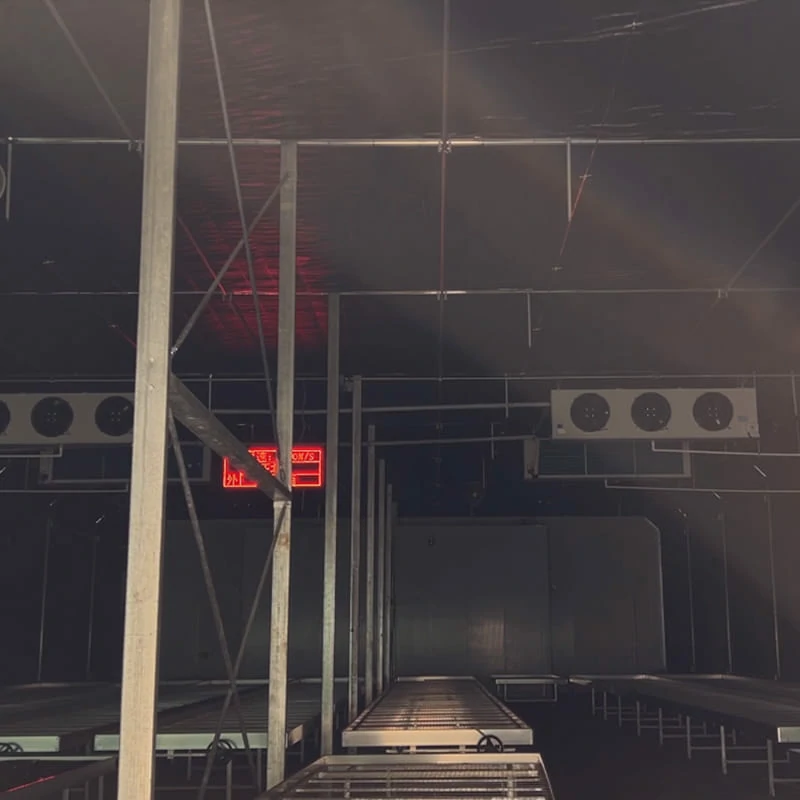The blackout greenhouse, also known as a light deprivation greenhouse or light-blocking greenhouse, was designed to provide precise control over the light exposure to plants. The primary purpose of a blackout greenhouse is to manipulate the photoperiod (duration of light and darkness) for plants, particularly those that require specific light conditions for growth, flowering, or fruiting.
Here are the main reasons why blackout greenhouses were developed:
- Photoperiod Control: Certain plants have specific light requirements to trigger critical growth stages or physiological responses. For example, some flowering plants require specific day lengths (short days or long days) to induce or inhibit flowering. By using a blackout greenhouse, growers can manipulate the photoperiod by controlling the amount and duration of light exposure to the plants. This enables them to mimic natural day length conditions, promote or delay flowering, and optimize growth cycles.
- Crop Synchronization: Blackout greenhouses are commonly used in commercial horticulture to synchronize crop production and achieve consistent harvests throughout the year. By controlling the light exposure, growers can manipulate the growth and flowering cycles of different plant batches or cultivars to ensure a continuous supply of marketable products. This allows for better planning, inventory management, and meeting market demands.
- Pest and Disease Management: Light deprivation provided by blackout greenhouses can help prevent or control pest and disease infestations. By blocking out external light sources during specific periods, growers can create a barrier that limits the entry or reproduction of pests, such as certain insects or mites that are attracted to light. Additionally, light deprivation can disrupt the life cycle of certain pests or pathogens that are sensitive to photoperiod cues, reducing their population and impact on crops.
- Climate Control: Blackout greenhouses also offer advantages in terms of climate control. By blocking out excess light and heat during hot summer days, growers can reduce plant stress and minimize the need for excessive cooling. Similarly, during cold winter months, the greenhouse can retain heat better by reducing light exposure, helping to maintain a stable and suitable temperature for plant growth.
- Energy Efficiency: The design of blackout greenhouses can contribute to energy efficiency. By reducing the amount of light and heat entering the greenhouse during certain periods, growers can minimize energy consumption associated with lighting, cooling, or heating. This can lead to cost savings and environmental benefits.
Overall, blackout greenhouses were specifically designed to provide precise control over light exposure, allowing growers to manipulate the photoperiod for plants, synchronize crop production, manage pests and diseases, optimize climate conditions, and enhance energy efficiency. They are particularly valuable in commercial horticulture for achieving consistent yields, extending growing seasons, and meeting market demands.
What are some examples of plants that require specific day lengths for flowering?
Several plants exhibit specific flowering responses based on day length.
Here are some examples of plants that require specific day lengths for flowering:
- Short-Day Plants: These plants require a longer period of darkness (short days) to induce flowering. They typically flower when the day length is less than a critical threshold. Examples of short-day plants include:
- Chrysanthemums (Chrysanthemum spp.)
- Poinsettias (Euphorbia pulcherrima)
- Christmas Cacti (Schlumbergera spp.)
- Kalanchoe (Kalanchoe blossfeldiana)
- Strawberries (Fragaria spp.)
- Long-Day Plants: These plants require a shorter period of darkness (long days) to induce flowering. They typically flower when the day length exceeds a critical threshold. Examples of long-day plants include:
- Spinach (Spinacia oleracea)
- Lettuce (Lactuca sativa)
- Radishes (Raphanus sativus)
- Wheat (Triticum spp.)
- Sunflowers (Helianthus spp.)
- Day-Neutral Plants: These plants are not significantly influenced by day length and can flower under a wide range of day lengths. They are not photoperiod-sensitive for flowering induction. Examples of day-neutral plants include:
- Tomatoes (Solanum lycopersicum)
- Cucumbers (Cucumis sativus)
- Peppers (Capsicum spp.)
- Marigolds (Tagetes spp.)
- Zinnias (Zinnia spp.)
It’s important to note that while these plants have general classifications as short-day, long-day, or day-neutral, there can be variations and specific requirements within each species or cultivar. Additionally, some plants have intermediate photoperiod requirements or can be influenced by other environmental factors such as temperature or hormonal cues. Therefore, it’s always recommended to consult specific plant cultivation guides or resources for precise information on the light requirements of individual plant species or cultivars.
